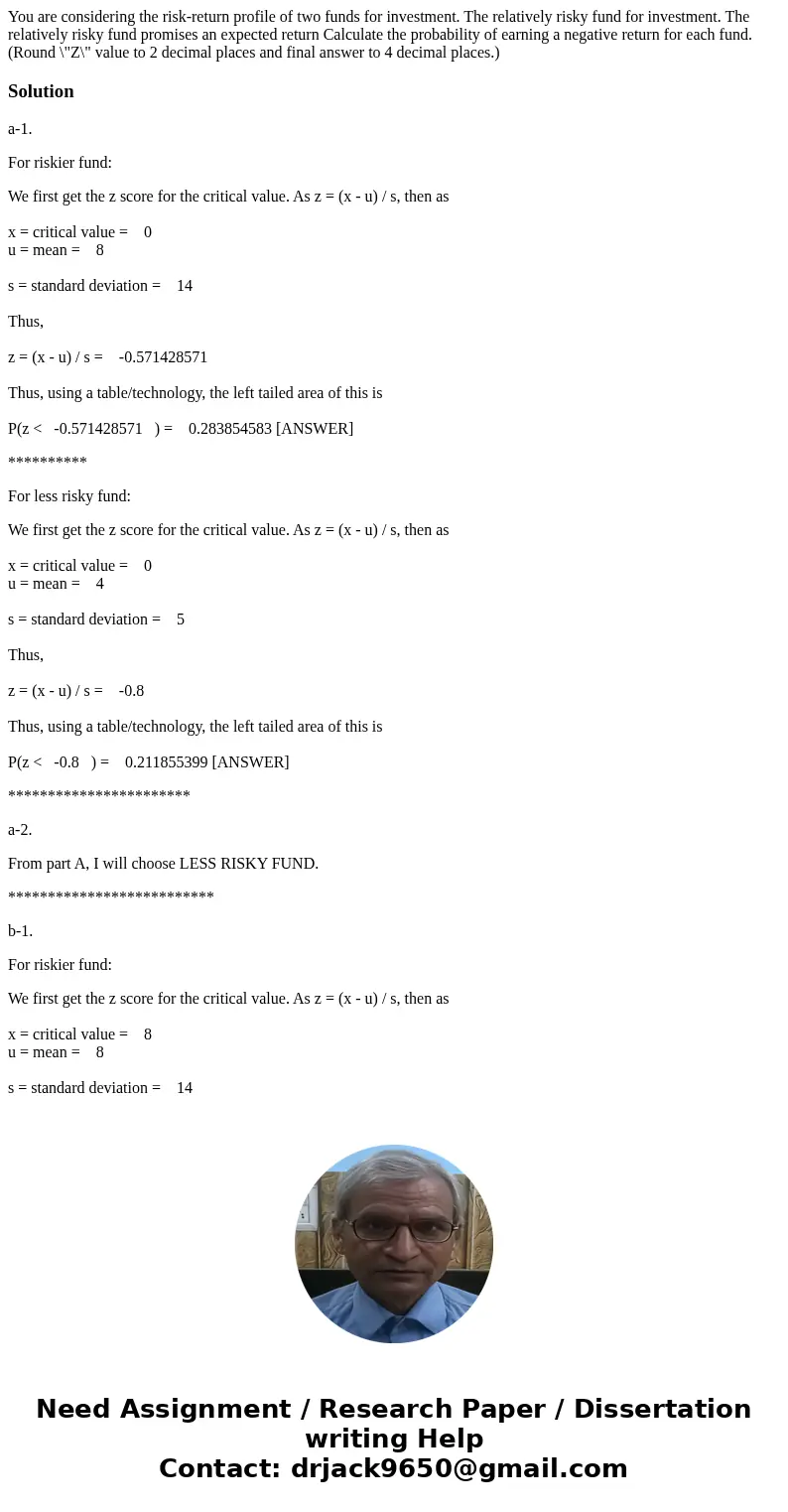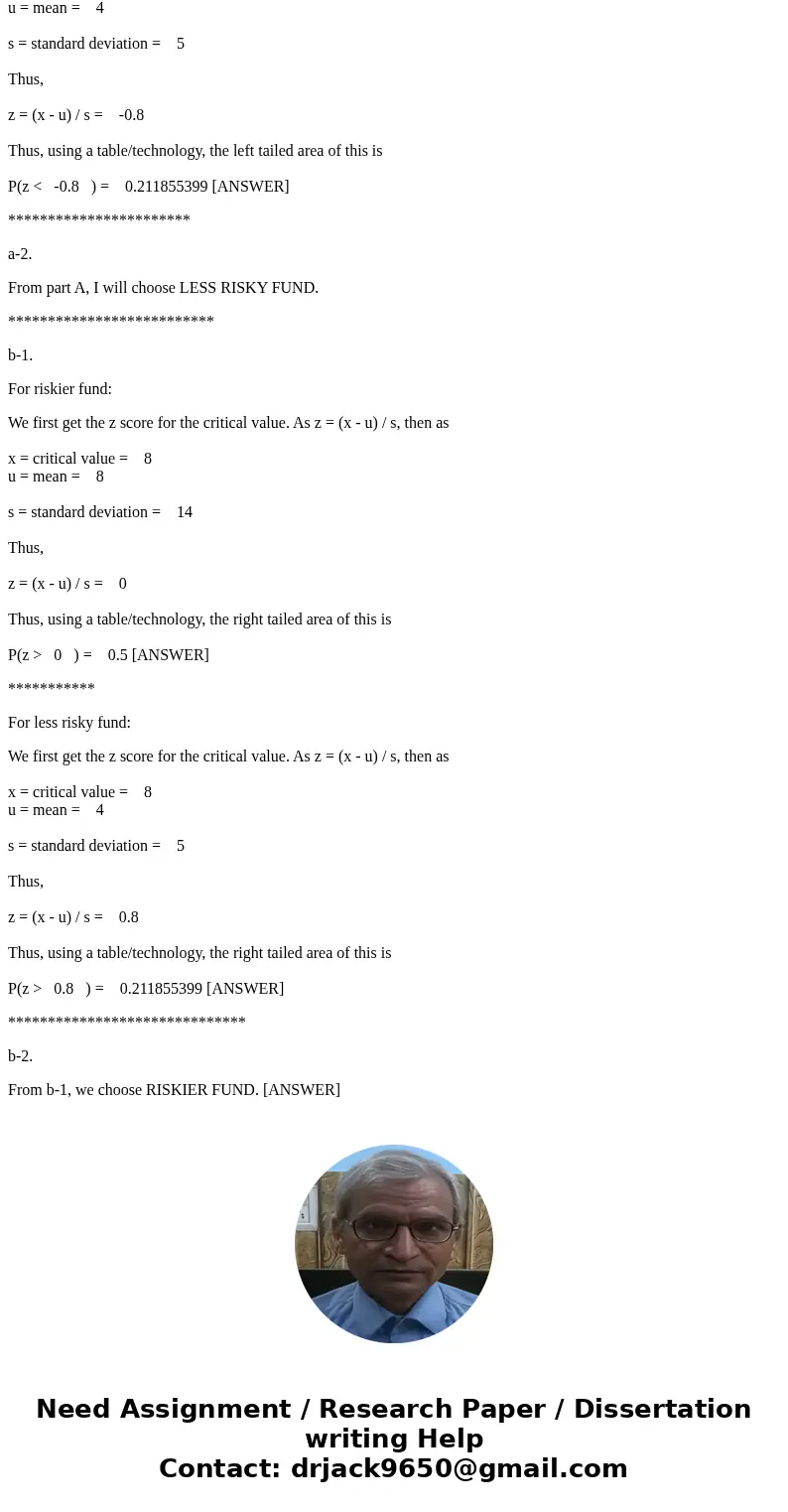You are considering the riskreturn profile of two funds for
Solution
a-1.
For riskier fund:
We first get the z score for the critical value. As z = (x - u) / s, then as
x = critical value = 0
u = mean = 8
s = standard deviation = 14
Thus,
z = (x - u) / s = -0.571428571
Thus, using a table/technology, the left tailed area of this is
P(z < -0.571428571 ) = 0.283854583 [ANSWER]
**********
For less risky fund:
We first get the z score for the critical value. As z = (x - u) / s, then as
x = critical value = 0
u = mean = 4
s = standard deviation = 5
Thus,
z = (x - u) / s = -0.8
Thus, using a table/technology, the left tailed area of this is
P(z < -0.8 ) = 0.211855399 [ANSWER]
***********************
a-2.
From part A, I will choose LESS RISKY FUND.
**************************
b-1.
For riskier fund:
We first get the z score for the critical value. As z = (x - u) / s, then as
x = critical value = 8
u = mean = 8
s = standard deviation = 14
Thus,
z = (x - u) / s = 0
Thus, using a table/technology, the right tailed area of this is
P(z > 0 ) = 0.5 [ANSWER]
***********
For less risky fund:
We first get the z score for the critical value. As z = (x - u) / s, then as
x = critical value = 8
u = mean = 4
s = standard deviation = 5
Thus,
z = (x - u) / s = 0.8
Thus, using a table/technology, the right tailed area of this is
P(z > 0.8 ) = 0.211855399 [ANSWER]
******************************
b-2.
From b-1, we choose RISKIER FUND. [ANSWER]


 Homework Sourse
Homework Sourse